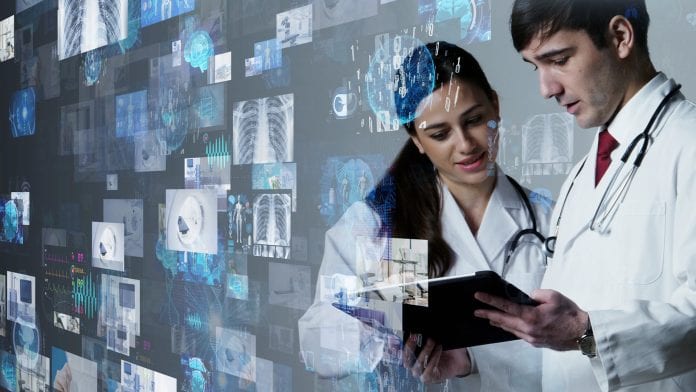Owing to economic downturns and global uncertainties, the years 2018 and 2019 were surprisingly sluggish. But 2020 has taken us on a roller coaster ride to experience the intrusion of trends in Artificial Intelligence (AI) that have helped the healthcare industry. The need of the hour when the pandemic broke out was creativity. In resolving the crisis and generating future growth, AI and its applications have played a crucial role. Let’s take a moment to look back at the changes brought to the radar in 2020. The main event happening in 2020 is the digital transformation of healthcare.
The advent of healthcare technology is proving to be of tremendous benefit to patients, developers of healthcare technology, and health care providers. Healthcare technology is a promising assumption that has the potential to drive healthcare forward, make it accessible, enhance interoperability, improve patient experience through solutions for patient engagement, and reduce the overall cost of providing healthcare in the long term by making it more efficient and data-driven. With the Covid-19 vaccines already on the market, patient expectations are at their peak for 2021. From now on, in 2021, Analytics Insight will bring you three major healthcare streamlining technologies. In hospitals, the potential of augmented and virtual reality is not just present. The techniques even affect how medical students are educated at institutions. The front-running trends that could take the healthcare industry towards unprecedented growth are virtual and augmented realities.
The use of computer technology to create a simulated setting is virtual reality. VR places the user inside an experience, unlike traditional user interfaces. Meanwhile, augmented reality allows us to see the real-life environment with a digital augmentation superimposed on it right in front of us. Healthcare AR and VR technology applications are devising profitable use cases for many diseases. The program will help victims of stroke resolve motor shortcomings. To help regain motor control, stroke patients are obligated to be placed in a robust environment. Nevertheless, under physical treatment, the simulated environment powered by AR and VR can provide more flexibility. To treat people suffering from dementia and cognitive impairments, VR headsets are also used.
Healthcare cybersecurity requires safeguarding electronic information and properties from unauthorized access, use, and disclosure. The healthcare sector became aware of the value of medical knowledge that they only had after the pandemic. Hackers laundering the dark web showed a great deal of interest in stealing medical information of high importance to make money out of it. During the outbreak of Covid-19, the act spiked as patient data at the time was highly regarded. Ransomware attacks, in particular, shut down IT systems during the second half of 2020 and slowed down operations at hospitals and healthcare facilities across the United States. Even healthcare institutions that did not face security breaches resumed external emails and expanded monitoring of incoming emails in October as a precautionary stance.
The stock market saw remarkable growth during the second half of 2020, given the sluggish or plummeting share prices in the first half, which brought a dark cloud over the economy. The reasoning for this rapid shift was the announcement of the vaccine and its effective effectiveness, which can protect humans from the coronavirus. The large scale of inoculation drives began across the globe as 2021 began. Many vaccines that have violated the emergency approval have to be injected twice, however. This includes the effort of governments to monitor the patients who took the first dose and to make them come over for another shot. In these hectic circumstances, data analytics and interoperability will assist.
Follow and connect with us on Facebook, Linkedin & Twitter

